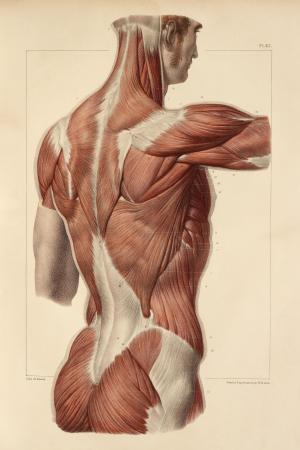Biomechanical Properties of the Lumbar Myofascia in Patients with Chronic Low Back Pain
The biomechanical properties of the myofascia are mostly assessed by manual palpation and is used to assist in diagnosis and evaluation of therapeutic effect. However, the reliability of manual palpation in a clinical application has always been questioned. Now, a new tool called MyotonPRO is available. It is a handheld instrument that can measure the tone, elasticity, and stiffness of the myofascial tissues. Researchers now can investigate the biomechanical properties of the lumbar myofascia in patients with chronic low back pain.
The first study from Peoria, USA investigated biomechanical properties of lower lumbar myofascial in younger adults with chronic idiopathic low back pain and matched healthy controls. The biomechanical properties of stiffness, frequency, decrement (a measure of elasticity), creep, and stress relaxation time of the L3-L4 myofascial tissues were measured using MyotonPro.
25 chronic LBP participants (16 female, 9 male) and 25 age- and sex-matched control subjects were recruited. Measurements were obtained in the prone resting position on the left and right sides (initially and after 10 min rest).
The study found significant male versus female differences in biomechanical properties in both LBP and control subgroups. Female LBP had significantly higher stiffness and decreased elasticity than female controls. In female LBP patients, BMI is correlated with elasticity and creep.
The study showed that LBP female patients showed a decrease in elasticity in the lumbar myofascia.
The second study from Guangzhou, China, evaluated the biomechanical properties of the lumbar myofascia in elderly patients with chronic low back pain and healthy people when resting. This case-control study included 40 elderly patients with chronic low back pain and 40 healthy volunteers. MyotonPRO was also used to measure the biomechanical properties of the bilateral lumbar extensor myofascia (at L3/L4 level).
The study found that the average lumbar extensor muscle tone and stiffness were significantly higher in patients with chronic low back pain than those in healthy controls. The average elasticity of the lumbar extensor myofascia of patients with chronic low back pain was significantly lower than that of the healthy controls. Pain Visual analog score was positively correlated with the mean values of tone, stiffness, and elasticity of the bilateral lumbar extensor myofascia.
Both studies confirmed that young and elderly patients with chronic lower back pain has increased stiffness and lower elasticity. It seems that for younger patients, the biomechanical difference is more prominent in the female.


